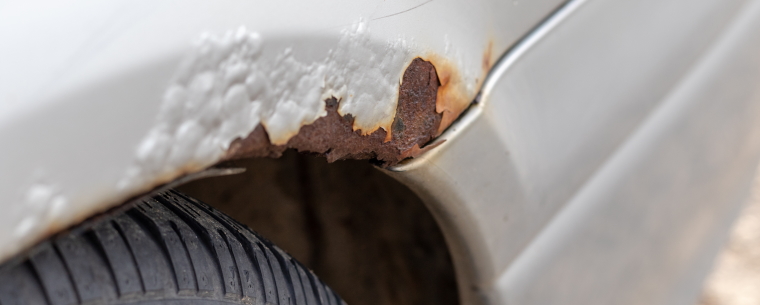How to Prevent Rust on Your Car
Jack Dreyer | Tuesday 8th February 2022 2:30pm

Rust can be something of a silent assassin for a car. While it may look small and fairly insignificant, the damage it can cause can ruin your carís body panels, and even compromise the structural integrity of your vehicle as a whole.
Prevention is the key when it comes to rust and rust damage. Taking the time to look after your vehicleís exterior puts you ahead of the issue, and saves you from scrambling to find fixes once you spot the first signs of rust. However, if you are in that position, then there are still a few things you can do to help - read on to find out more.
What causes rust?
Rust develops when iron reacts with oxygen and water, with the reactions appearing as an orangey-brown layer that can lead to corrosion and damage. In the context of a car, this usually happens because of a few different factors:
- Weather Ė Rain, sleet, and snow all increase the chances of rust appearing on your car. Naturally, this is a higher risk in winter, when even things like the salts used to grit icy roads can speed up the corrosion process.
- Age Ė Paintwork can suffer from wear and tear more over time, particularly as any protective coatings on the paint naturally wear away. The more that any metalwork is exposed to moisture, the more likely it is that it will eventually rust and corrode.
- Materials Ė You often find that rust is more common on older models, as older cars were generally made without non-reactive coatings. Newer cars also use arch liners to prevent vulnerable areas like wheel wells.
Where is rust most likely to occur?
If youíre worried about the effects of rust damaging your vehicle, then there are a few handy checks and things you can do to minimise the risk. The best way to deal with rust is to stop it from ever occurring, and if thatís your game plan, itís a good idea to focus your checks on the major problem areas. These include:
- Under the body mouldings and trim
- Where the side mirrors connect with the car
- Where the antenna joins
- Around the sunroof
- The entire surface under the vehicle
- Wheel wells
Now, that last one is a biggie. Wheel wells are a common trouble spot for rust developing, partly because theyíre often neglected from cleaning and maintenance, and because the dirt build-up can mean you donít spot the rust for a long time.
To keep things clean and tidy, use a torch to thoroughly inspect and clean the inside of your wheel wells. You can do this at the same time as you rotate your tyres, which can be a handy way to schedule it in and stop yourself forgetting.
Spotting rust early
So, now you know what causes rust, and where to look for it to help prevent it from causing damage to your car. But just because you know where to look, do you know what exactly it is that youíre looking for?
The signs of rust can appear in a few different ways. When youíre examining your car for potential rust, look out for the following:
Bubbles
Bubbles under the paint can indicate that water and air have gathered under the surface of the paint - which means that this is likely to become a hotspot for rust in the not-too-distant future.
Water damage
If you spot water damage, or even puddles, inside your car - such as in the footwells or the boot - this is often a sign that the bodywork around that area may have rusted.
Body damage
If youíve got any damage on the bodywork of your car, like scratches, nicks, or dents, these can be a good place to focus your rust-prevention efforts.
Looking after your car
There are lots of different reasons that your car might have patches of rust. While things like regular washing (with a car wash, not household soap) and regular checks can help you to prevent issues and spot things early, if youíve already got rust on your car then itís time to enlist the help of the professionals.
Itís always a good idea to head to a garage and get them to assess how bad the damage is, and whether it can be fixed. If you have any concerns about rust on your car, head to your local Kwik Fit centre and talk to one of our technicians for friendly, helpful advice.
Any facts, figures and prices shown in our blog articles are correct at time of publication.
Featured Articles
Is it Illegal to Drive With One Headlight?
Saturday 19th July 2025
Wondering if itís illegal to drive with one headlight? Learn about the safety risks and penalties of illegal blown bulbs and why you should fix them promptly.
Air Con in EVs & Hybrids: Experts Answer Your Questions
Monday 30th June 2025
Does air con drain EV batteries? Can you use the air con while charging an electric car? Find out the answers to these questions & more from Kwik Fitís experts.
Why Is Your Car Making a Noise? Fixes & Tips
Friday 13th June 2025
When your car starts making unexpected noises, it can certainly be quite disconcerting; it may be nothing to worry about, but hereís what you need to know.









